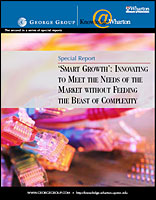Looking for more insights?
Sign up to stay informed about our latest article releases.
Determining the financial impacts of innovation-related complexity begins with taking a close look at existing operations to understand the actual cost incurred and value generated at each step in the process -- all the way from idea generation through product development, manufacturing, marketing and customer support, among other back-office functions.

Sign up to stay informed about our latest article releases.